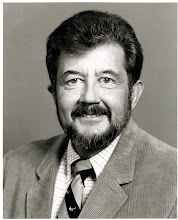
The NPRA or National Petroleum Reserve (see figure) was established in 1923 for exploitation for oil and gas in a national emergency (for the relative position of the NPRA see figure. In the 1970s and early 1980s, the U.S. Geological Survey (USGS) contracted exploration drilling of the area, searching for another super giant oil field like the domed reservoirs (structural trap) found in Prudhoe Bay (estimated total production of 13 billion barrels of oil), the largest oil field in North America but 9th largest worldwide. None was found. In the late 1990s with the discovery of the giant Alpine field (estimated to be 800+ million barrels of oil) in a pinch out of reservoir rocks (stratigraphic trap) near the border of the NPRA, but in Prudhoe Bay, exploration in the NPRA was renewed. An appraisal by the USGS in 2002 estimated very large possibilities for oil production along with very significant quantities of natural gas. (http://pubs.usgs.gov/fs/2002/fs045-02/) of 6.7 to15 billion barrels of recoverable oil (BBO) and a mean value of 59.7 trillion cubic feet (TCFG) of natural gas, pending a gas pipeline being built to the area. This year (2010), however, the estimates have been greatly reduced to 896 (MMBO) and 52.8 TCFG of natural gas as a result of further exploration drilling. The current estimate for recoverable oil is now about one-tenth the estimate in 2002. What the real production is likely to be is anybody’s guess (http://energy.usgs.gov/flash/slidesNPRAWEBver2010.pdf). You don’t know until you bring it in.
The Bakken Shale of North Dakota and Montana in the U.S. has received considerable misleading press. You probably have seen comments that it contains more oil than Saudi Arabia. The amount of estimated recoverable oil of 3.65 BBO (http://pubs.usgs.gov/fs/2008/3021/pdf/FS08-3021_508.pdf), though huge, is much, much less, even much less than the Prudhoe Oil Field estimated recoverable oil of 13 BBO and a fraction of the estimates of others as high a 300 BBO as recently as 2006 (http://en.wikipedia.org/wiki/Bakken_Formation). There certainly is a lot of activity on the Bakken shale, but we won’t know the ultimate reality of production until the oil is brought in.
The Alaskan Natural Wildlife Reserve or ANWR (see figure) has received very large estimates of oil potential (http://pubs.usgs.gov/of/2005/1359/OF2005-1359.pdf) of 10.4 BBO with oil prices above $50/bbl; however ANWR is yet to be drilled. The target under consideration is area 1002, a very small part of ANWR (see figure). The 95% probability is 4.25 BBO at high oil prices such as exist today http://pubs.usgs.gov/of/2005/1217/pdf/2005-1217.pdf. but the favored drilling area has already been moved from the eastern part of ANWR to the western part. Production will again be from stratigraphic traps such as for NPRA. Even though the current assessment is said to be the best ever made, I would suggest that in view of previous attempts to estimate oil production in the NPRA and for the Bakken Shale, that we be a bit careful about accepting such large numbers until the oil is brought in. I believe that the area needs to be drilled just to find out what is really there. The environmental damage could be minimized by drilling in the winter on ice beds instead of gravel, with vehicles using ice-bed roads and perhaps from just a central platform with drilling done in many directions and extending for miles underground.

No comments:
Post a Comment